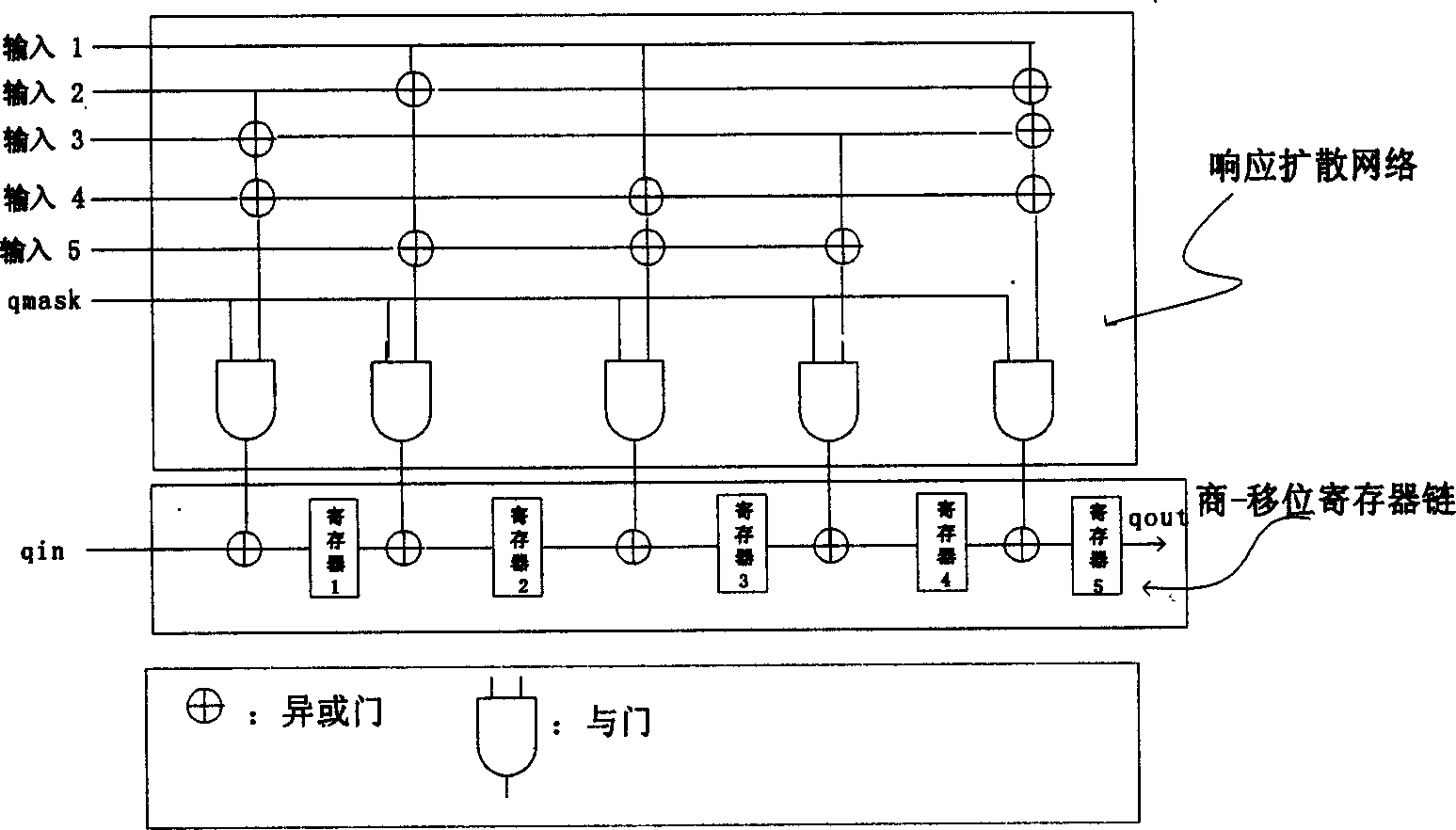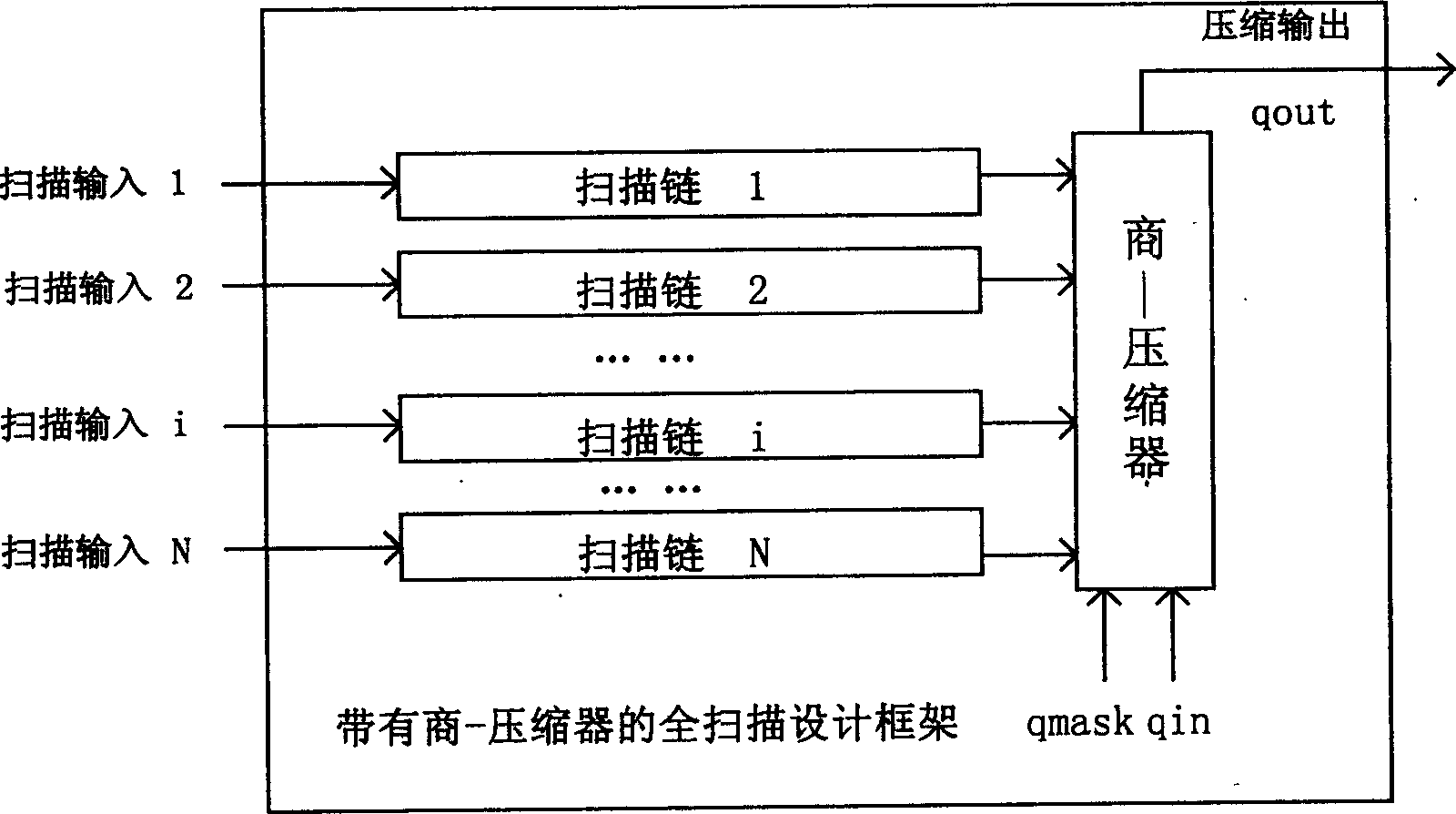Single-output feedback-free sequential test response compression circuit
A circuit and compressor technology, which is applied in the field of single-output non-feedback timing test response compression circuit, which can solve the problems of long test time, low compression rate, and inability to guarantee
- Summary
- Abstract
- Description
- Claims
- Application Information
AI Technical Summary
Problems solved by technology
Method used
Image
Examples
Embodiment Construction
[0051] The invention is applied to compress the test response. Figure 2 depicts the full scan design framework with quotient-compressor. It can be seen from the figure that the response compressor is designed on the output of the scan chain. Compress the output of multiple scan chains into one output, and output to the test equipment through a scan output pin for comparison. Therefore, from the perspective of the entire design process, the design of the response compressor and the design of the scan chain are basically independent of each other. Therefore, there is no need to modify the design flow of the original chip in response to the insertion of the compressor, nor does it need to modify the testability design flow of the original chip.
[0052] Figure 3 lists the applicator-compressor design flow for testability. It can be seen that the testability design process for an applier-compressor can be divided into the following steps:
[0053] 1) Comprehensive, scan chain design. ...
PUM
 Login to View More
Login to View More Abstract
Description
Claims
Application Information
 Login to View More
Login to View More - R&D
- Intellectual Property
- Life Sciences
- Materials
- Tech Scout
- Unparalleled Data Quality
- Higher Quality Content
- 60% Fewer Hallucinations
Browse by: Latest US Patents, China's latest patents, Technical Efficacy Thesaurus, Application Domain, Technology Topic, Popular Technical Reports.
© 2025 PatSnap. All rights reserved.Legal|Privacy policy|Modern Slavery Act Transparency Statement|Sitemap|About US| Contact US: help@patsnap.com



